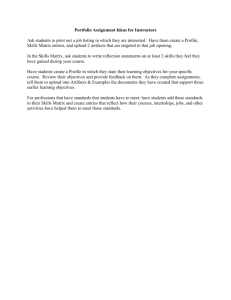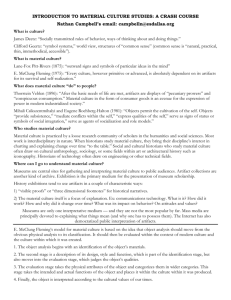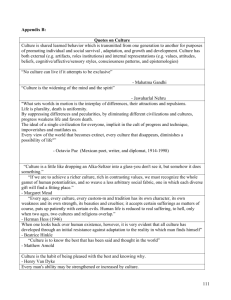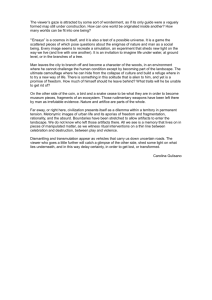Healthy Foods Artifacts and Hop, Skip, and Jump
advertisement
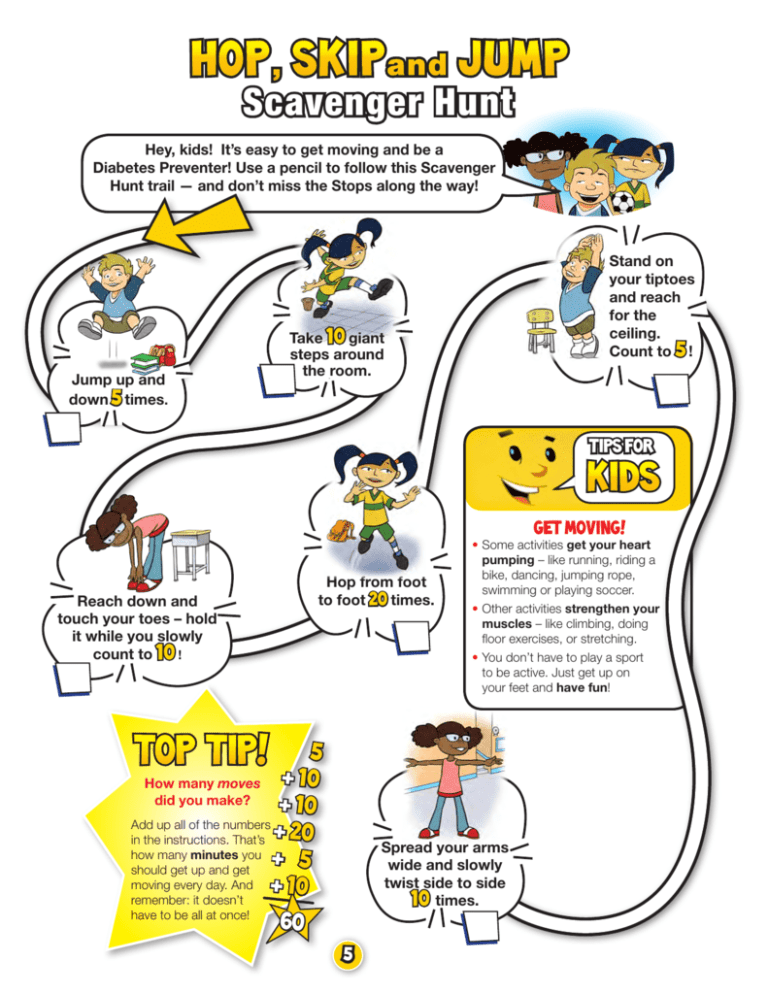
Hop , Skip and Jump Scavenger Hunt Hey, kids! It’s easy to get moving and be a Diabetes Preventer! Use a pencil to follow this Scavenger Hunt trail — and don’t miss the Stops along the way! Jump up and down 5 times. Stand on your tiptoes and reach for the ceiling. Count to 5 ! Take 10 giant steps around the room. Tips for KIDS Get Moving! Hop from foot to foot 20 times. Reach down and touch your toes – hold it while you slowly count to 10 ! • Some activities get your heart pumping – like running, riding a bike, dancing, jumping rope, swimming or playing soccer. •Other activities strengthen your muscles – like climbing, doing floor exercises, or stretching. •You don’t have to play a sport to be active. Just get up on your feet and have fun! Top Tip! 5 How many moves + 10 did you make? + 10 Add up all of the numbers + 20 in the instructions. That’s how many minutes you + 5 should get up and get moving every day. And + 10 remember: it doesn’t have to be all at once! Spread your arms wide and slowly twist side to side 10 times. 60 5 Healthy Foods Artifacts Overview Artifacts are assorted pieces of print material and objects that students bring into the classroom to demonstrate understanding of a topic. For this activity, students learn by collecting nutrition-related “artifacts” that serve as the basis for discussion and learning. Review the Key Messages on page 3. Discussion/Class Learning •Have students categorize the artifacts in different ways: for example, by fruits, vegetables, wholegrain, low-fat dairy. Challenge kids to find the Nutrition Facts Label on the packages, and sort the foods according to sugar content and fiber. •The artifacts are the springboard for a variety of in-class activities. Use them for group share (what would the students choose as their favorite healthy snacks?) journaling (why did they choose the artifacts they brought in?), and nutrition discussions. Introductory Steps •Begin by asking students what the video showed them about being healthy. What did the kids in the video learn? Remind students that in Hop, Skip and Jump, they’ve seen that it’s easy to get up and get moving. Tell them that now they are going to explore other important aspects of staying healthy: maintaining a healthy weight by making smart food choices. •Ask students if they know what an artifact is. (Artifacts are objects from a society that help you understand how that society lived. Archeologists use artifacts to study history.) Tell students that they will use nutrition artifacts to learn about healthy eating. •Invite students to bring in artifacts that exhibit what it means to eat “healthy:” juice containers, pieces of fruit, fresh vegetables, high-fiber foods (like whole grain crackers), nuts, food labels of healthy foods, pictures from a newspaper or magazine of healthy foods, or empty packages. Display artifacts in a location for the whole class to view. Extension Activities Curriculum Connections & Classroom Tips 1. Collect artifacts and create a classroom bulletin board displaying student work/ journals and artifacts. 2. Invite another classroom to view artifact collection/student work and have students share what they learned about diabetes with their peers. •Have students use empty packages and pictures to build a healthy snacks collage. •Introduce the concept of “serving size.” Challenge students to find the serving size and servings per container on the Nutrition Facts Label. What does this tell them about how much they should eat of a particular food? Are they surprised to discover the serving size? •Invite the school dietitian or nurse to visit the classroom and talk about healthy food choices. FOR MORE INFORMATION... Tips for Other Types of Educators For more in-depth nutrition background and to extend your students’ knowledge of nutrition, use the following online resources: • To discover nutrition recommendations for children: www.mypyramid.gov • To learn about portion size comparisons: www.webmd.com/diet/printable/ wallet-portion-control-size-guide 1. Have children create a form of artwork that demonstrates what they learned about diabetes. 2. Have students create lyrics for a song about diabetes awareness. 3. Play a game of “diabetes charades” where students try to guess diabetes related words. 6




